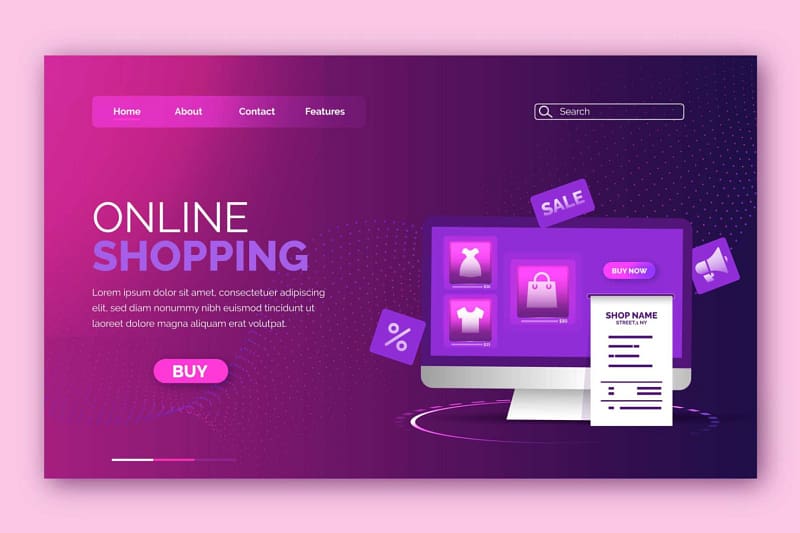
Billboard Type Website vs. Traffic Magnet: Unveiling the Key Differences in Website Development
In the digital world, not all websites are created equal. While some function as static billboards, providing basic information, others are carefully crafted to attract, engage, and convert traffic. Let’s explore the stark differences between a website that serves as a mere billboard and one that is intentionally crafted to bring in traffic.
**1. Purposeful design:
· Billboard Website: A billboard website typically displays static information without much consideration for user interaction or engagement.
· Traffic Magnet Website: A traffic-focused website is purposefully designed with user experience in mind, featuring intuitive navigation, compelling visuals, and strategically placed calls-to-action to guide visitors through a journey that leads to conversions.
**2. Content engagement:
· Billboard Website: A billboard-style website may have static content, lacking engaging elements that encourage visitors to stay and explore.
· Traffic Magnet Website: A traffic-oriented website prioritizes dynamic and interactive content. It incorporates blog posts, videos, infographics, and other engaging formats that keep visitors longer.
**3. Search engine visibility:
· Billboard Website: A billboard website may lack search engine optimization, resulting in lower visibility and limited organic traffic.
· Traffic Magnet Website: A traffic-centric website is optimized for search engines (SEO). It incorporates relevant keywords, high-quality content, and other SEO best practices to attract organic traffic from search engine results.
**4. Conversion optimization:
· Billboard Website: Conversion elements are often overlooked on a billboard-style site, leading to missed opportunities for turning visitors into leads or customers.
· Traffic Magnet Website: A traffic-focused website emphasizes conversion optimization. It includes strategically placed and compelling calls-to-action, forms, and landing pages to capture leads and drive conversions.
**5. Social Media Integration:
· Billboard Website: Social media integration may be minimal on a billboard website, limiting reach and audience engagement.
· Traffic Magnet Website: A traffic-oriented website integrates seamlessly with social media platforms. It encourages community sharing, utilizes credibility proof, and leverages social media channels to drive traffic back to the site.
**6. Analytics and Data Utilization:
· Billboard Website: A billboard site may lack robust analytics tracking, making it challenging to understand user behavior and make data-driven improvements.
· Traffic Magnet Website: A traffic-centric website leverages analytics tools to gather insights into user behavior. This data is used to refine the website, optimize content, and enhance the overall user experience.
**7. Responsive design:
· Billboard Website: A billboard-style website may not prioritize responsive design, leading to a suboptimal experience for mobile users.
· Traffic Magnet Website: A traffic-focused website ensures responsive design, providing an optimal viewing experience across various devices. This is crucial for attracting and retaining a diverse audience.
**8. Frequent Content Updates:
· Billboard Website: Content on a billboard website may remain stagnant for extended periods, lacking freshness
· Traffic Magnet Website: A traffic-oriented website regularly updates content to reflect industry trends, provide valuable information, and maintain a dynamic online presence that encourages repeat visits.
**9. Lead Generation Strategies:
· Billboard Website: Lead generation strategies may be minimal or non-existent on billboard-style sites.
· Traffic Magnet Website: A traffic-centric website incorporates lead generation strategies such as email sign-ups, gated content, and subscription forms to build a valuable audience and nurture leads.
**10. Community Building:
· Billboard Website: A billboard website may not foster a sense of community or engagement with its audience.
· Traffic Magnet Website: A traffic-focused website aims to build a community through features like comment sections, forums, and interactive elements that encourage user participation and discussion.
Final thoughts:
In summary, while a website that is used as if it’s a billboard may serve basic informational purposes, a website with a traffic-oriented approach is a dynamic tool designed to attract, engage, and convert visitors. Investing in user experience, SEO, and conversion strategies can help your website achieve sustained online success by prioritizing user experience, SEO, and conversion strategies.
